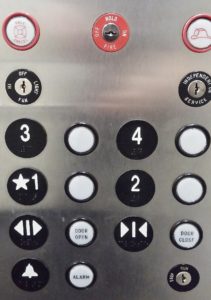
An older article in the Houston Press focused on elevator accidents in Houston, in Texas, and around the United States. It’s a lengthy, detailed and sobering story. Not much has changed since the story was originally written, so this post will summarize it. Our next post will discuss the steps the state has taken to improve elevator safety.
Around 30 people are killed in elevator accidents in the United States each year, according to the Consumer Product Safety Commission. Another 17,100 are seriously injured. In Texas, there were 256 elevator and escalator accidents. Between 200 and 2004, there were four elevator-related deaths, according to statistics compiled by the Texas Department of Licensing and Regulation.
Primary Cause of Elevator Accidents
The primary cause of elevator accidents is tripping when getting on and off an elevator because the cab is not level with the floor. Passengers hurting their hands as elevator doors close is the second most common cause of injuries. In most instances, these types of incidents usually do not result in fatalities. However, there have been some grisly and fatal accidents that might make you hesitate before stepping into an elevator.
A far-too-common scenario is a workplace accident involving an elevator maintenance worker. Stories of elevators plunging down shafts unexpectedly make the work of elevator inspectors and maintenance technicians more dangerous that it should be.
Are Elevators Safe?
The elevator industry naturally promotes its own safety, pointing out that elevators make 12 billion trips every year, carry people 100 million miles. A spokesperson for the elevator industry notes that given the mileage, the number of accidents is miniscule. More people are injured in garage door accidents.
However, some safety experts beg to differ. One elevator consultant at the time the article appeared, John Quakenbush, was quoted in the article as saying, “If it was the safest form of transportation, why would all these people be getting killed or getting hurt? Codes are not being enforced. Safety slips, and people are getting killed. This is needless; it doesn’t have to happen.”
Local Hospital Subject of Lawsuits Over Elevators
It also turns out that some elevators are not as safe as others. For example, the elevators at St. Joseph’s Hospital in Houston have a spotty record. A surgical resident was decapitated when the elevator doors closed on him and the cab started moving while he was stuck half inside the cab. A workman was killed when he stuck his head into the shaft to see where the cab was, which right above him and hit him as it descended – with the door open. About ten years before, a woman slipped and fell because the cab was not level with the floor. Two months later, a woman visiting a patient stepped into an elevator and fell six inches, injuring her back, knee and shoulder, because the cab and floor were not at the same level. .
She hired an attorney to help her file a lawsuit against the hospital and the Otis Elevator Company, charging that the elevators were dangers, defective and unsafe. When her attorney visited the hospital with an expert to inspect the elevators, he said that he saws sparks fly. The state’s chief elevator inspect listed 22 code violations at the hospital that included oil-soaked rags in the machine room, open electrical connections and missing equipment guards. Elevators would operate with open doors. An inspection revealed burned resistors, loose wires, and excessive wear on brushes and contact points. Maintenance matters.
More to Come
Next week, we will update this story with information about more recent local elevator accidents and discuss the steps Houston and Texas are taking to prevent them.
